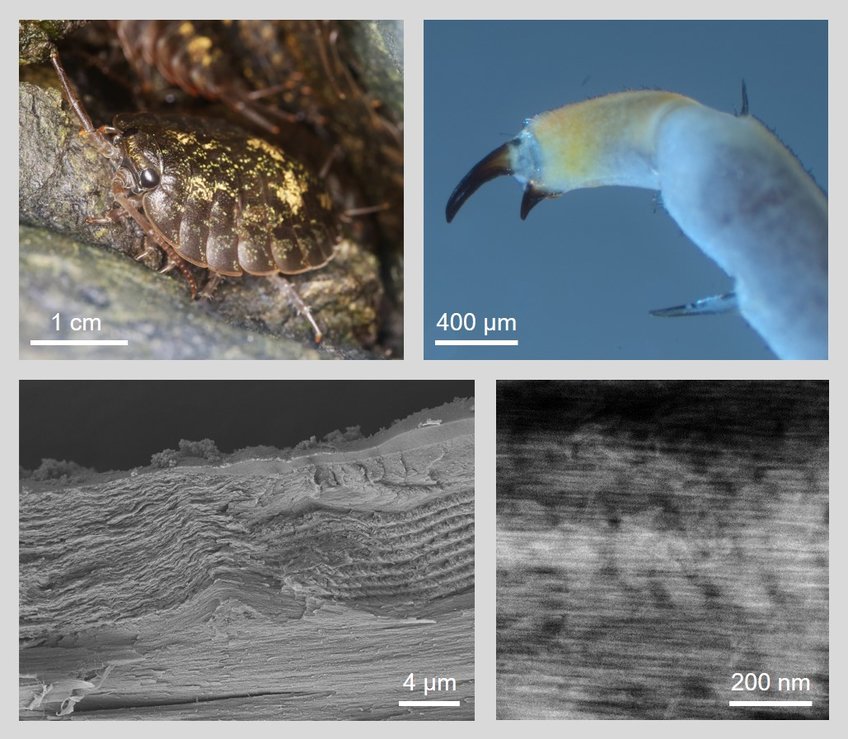
Intertwining Structure, Composition and Mechanical Properties of Composite Biological Structural Materials
Crustacean skeletons are structural biological composites consisting of chitin/protein fibers embedded in a mineralized matrix. In most crustaceans, calcium carbonate is the dominant mineral in the exoskeleton, but calcium phosphate may also be present. Skeletal elements that can withstand large forces have the potential to inspire new designs of biomimetic materials. In our long-term collaboration with Assist. Prof. Miloš Vittori (https://www.bf.uni-lj.si/en/about-the-faculty/employees/339/vittori-milos), we have focused on the walking legs of terrestrial isopods, which end in a claw. The thin claws of isopods are able to support the entire body weight, demonstrating their remarkable durability. Detailed ultrastructural and compositional studies help us to understand the interplay between the structure and properties.
Publications
1. M. Vittori, V. Srot, B. Bussmann, F. Predel, P. A van Aken and J. Štrus.
Claws of Terrestrial Crustaceans. Structure, Composition and Mechanics.
Microsc. Microanal. 30 (Suppl 1), 959–960 (2024).
https://doi.org/10.1093/mam/ozae044.472
2. M. Vittori, V. Srot, L. Korat, M. Rejec, P. Sedmak, B. Bussmann, F. Predel, P. A van Aken and J. Štrus. The Mechanical Consequences of the Interplay of Mineral Distribution and Organic Matrix Orientation in the Claws of the Sea Slater Ligia pallasii. Minerals 11(12), 1373-1387 (2021).
https://doi.org/10.3390/min11121373
3. M. Vittori, V. Srot, B. Bussmann, F. Predel, P. A. van Aken and J. Štrus. Analysis of Mineralized Matrices in Calcium Bodies with and without Bacteria in Two Species of Terrestrial Crustaceans. Microsc. Microanal., 26 (Suppl. S2), 2746 – 2747 (2020)